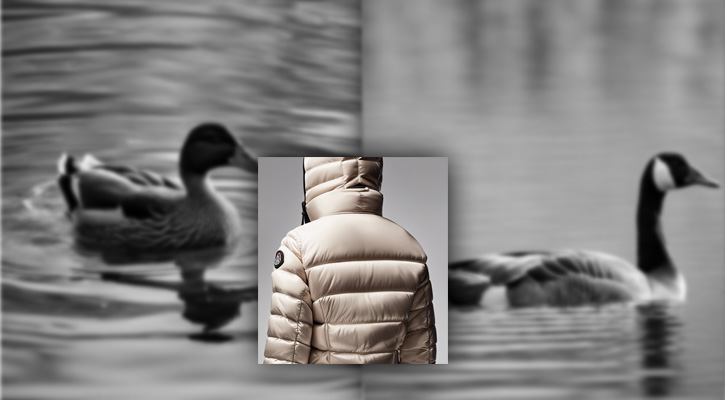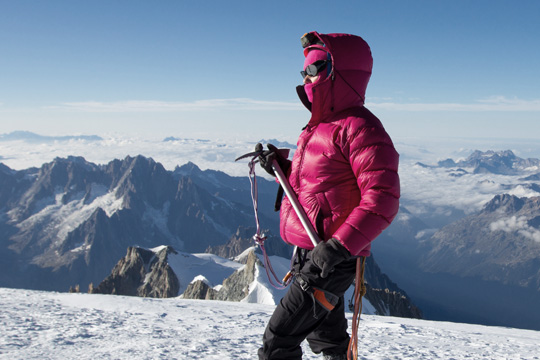
If you’re in the market for a new jacket, you know how important it is to make the right decision.
Today we’re diving into down insulation!
Specifically, we’ll be comparing duck and goose down, two of the most common types of insulation used in jackets.
You’ll often see a price difference between the two, but what are the actual differences in performance?
In this article, we’ll take a closer look at down insulation and its key characteristics before delving into the specifics of duck and goose down.
So, whether you’re in the market for a new jacket or just curious about the difference between these two types of insulation, read on to learn more.
Key Points:
- Goose down is generally considered loftier and higher quality than duck down, but both types behave and insulate identically at the same fill power.
- Duck down is more affordable and performs better than goose down when wet.
- Compressibility and durability are similar for both types of down.
- Down insulation is important for providing and retaining warmth in jackets.
- Down is sourced from geese and ducks and consists of the undercoat or plumage found in the underbelly of these birds.
- Down insulation works by forming clusters of thin fibers that create air pockets that trap and reflect body heat.
- Down is unique in that it is impossible to replicate in a laboratory and is highly durable and lightweight.
- Fill power refers to the quality of the down and ranges from 300 to 900, with higher ratings indicating better loft and warmth.
- The ratio of down to feathers is a useful indicator of a jacket’s warmth and quality.
1. What Is Down Insulation?
Although it’s unlikely that anyone reading this guide is unfamiliar with down jackets, we’ll be diving into the technical details beyond the basic understanding that it’s made of bird feathers.
Down filling is sourced from two types of birds: geese and ducks. Down is the undercoat or plumage found in the underbelly of these birds. It consists of a bundle of soft and lightweight feathers that are located beneath the tougher feathers.
This insulation is what allows geese and ducks to swim in freezing water with ease, as the plumage, along with the waterproof outer feathers, creates a perfect seal against the cold and water.

Read also: Synthetic (Polyester) vs Down Jacket: Which is Better?
2. Why Do You Need an Insulated Jacket?
As you’re likely aware, not all jackets are created equal. One of the key features that sets down jackets apart and has made them a popular choice for so long is their ability to provide and retain warmth.
While many jackets can keep you warm, not all of them have proper insulation to maintain that warmth. Insulation is crucial for protecting you in harsh temperatures, as it prevents your body heat from escaping. This is precisely what a down jacket does – it acts as a barrier to trap heat and keep it inside.
Read next: Hardshell vs Rain Jacket: The Difference
3. How Does Down Insulation Work?
Now that you understand the importance of down in a winter jacket, let’s take a closer look at why down is considered the best insulating filling available.
After being collected, down is formed into clusters made up of thousands of extremely thin fibers that cross and overlap, creating a “net” with tiny air pockets that are ideal for trapping heat.
What’s particularly fascinating about down is that these small air pockets not only trap heat but also reflect body heat, slightly increasing their temperature and providing that warm and cozy feeling unique to down jackets.
Another key feature of down as an insulator is that it remains breathable while still maintaining warmth, preventing overheating and moisture buildup inside the insulation.
This is especially crucial because when wet, down loses its loft and becomes practically useless. That’s why most down jackets available today are at least water-resistant – it’s a recipe for disaster otherwise.
4. Why Is Down Insulation Unique?

There are several factors that set down apart from other types of insulation.
Firstly, down is impossible to replicate in a laboratory. While there are insulations that can mimic its performance, they don’t compare to down’s ability to provide and retain warmth. These alternatives may be more useful in milder temperatures or rainy conditions.
Secondly, down is incredibly lightweight, with an impressive warmth-to-weight ratio.
Despite its lightness, it is also highly durable and resists wear and compression better than any other insulation. This is why packable down jackets are a popular choice for travelers – they can be compressed and then quickly return to their original shape and insulating abilities.
5. Fill Power
We’ve previously discussed this important aspect of down in other articles, but it’s worth reiterating as there are some misconceptions, particularly regarding weight.
To clarify, a down jacket with a higher amount of down doesn’t necessarily make it a better jacket. In fact, it can be problematic as it adds more weight and makes the jacket less compressible. If you’re looking for a down jacket that you can take anywhere, keep this in mind.
The true differentiator is the fill power of the down, which refers to the quality of the down.
A higher fill power rating means that the down clusters are larger and provide better loft, reducing the need for added weight. Fill power typically ranges from 300 to 800, but can sometimes be even higher. Look for a jacket with a fill power of at least 550.
6. Down Ratios
When shopping for a down jacket, you’ll likely encounter a percentage ratio of down and feathers.
It’s important to note that feathers are not as soft as down and do not provide the same level of insulation. Therefore, fill power only refers to down and not feathers, which do not have a fill power measurement.
The ratio of down to feathers is a useful indicator of the jacket’s warmth and quality. Generally, the higher the percentage of down, the warmer and higher quality the jacket will be.
7. Comparison: Duck vs. Goose Down Insulation
We’ve reached the most crucial part of this guide – examining the differences between duck and goose down. It’s important to note that determining which is better isn’t as simple as just looking at the source of the down. There are other factors to consider, as we’ve previously mentioned.

However, if we were to compare them solely based on overall quality, goose down would be the clear winner. This is because goose down is generally loftier, as it comes from more mature and larger birds. The higher quality down is yielded from more mature birds.
It’s worth noting that the production process is also crucial. Over-washing the down, regardless of the bird, can cause it to lose its abilities and become brittle and prone to damage due to the loss of fat and oil.
Goose down is also significantly more expensive than duck down, particularly higher fill power down. European down is the most expensive as it’s collected from mature birds and yields a higher grade of down.
Duck down, on the other hand, is more readily available and therefore more affordable. That’s why it’s the most commonly used in jackets, bedding, duvets, pillows, and more.
One advantage of duck down is that it performs better than goose down when wet. While both lose their insulation abilities when wet, duck down retains its performance for a longer period of time.
When it comes to compressibility and durability, there isn’t much difference between the two for the same fill power. They’re quite similar in that regard and can last for many years with proper care.
Which is a Better Insulator? Duck or Goose Down?
We began by delving into the technical aspects of down as an insulator, to provide a better understanding of how it works and the various percentages and terms involved.
Now, let’s address the question of which type of down is the better insulator. While goose down is often considered superior to duck down, there is no difference in insulation if we compare the same fill power for both types. They behave and insulate identically.
The difference in bird type only becomes noticeable when the fill power and weight change. However, this can be said for down in general, regardless of whether it’s sourced from geese or ducks.
8. Conclusions
That concludes our guide, and we hope you found it informative and useful. Armed with this knowledge, you now know what to look for and how to read jacket labels to find the best down jacket for your specific needs.
Read next: 7 Best Italian Down Jacket Brands for Winter
